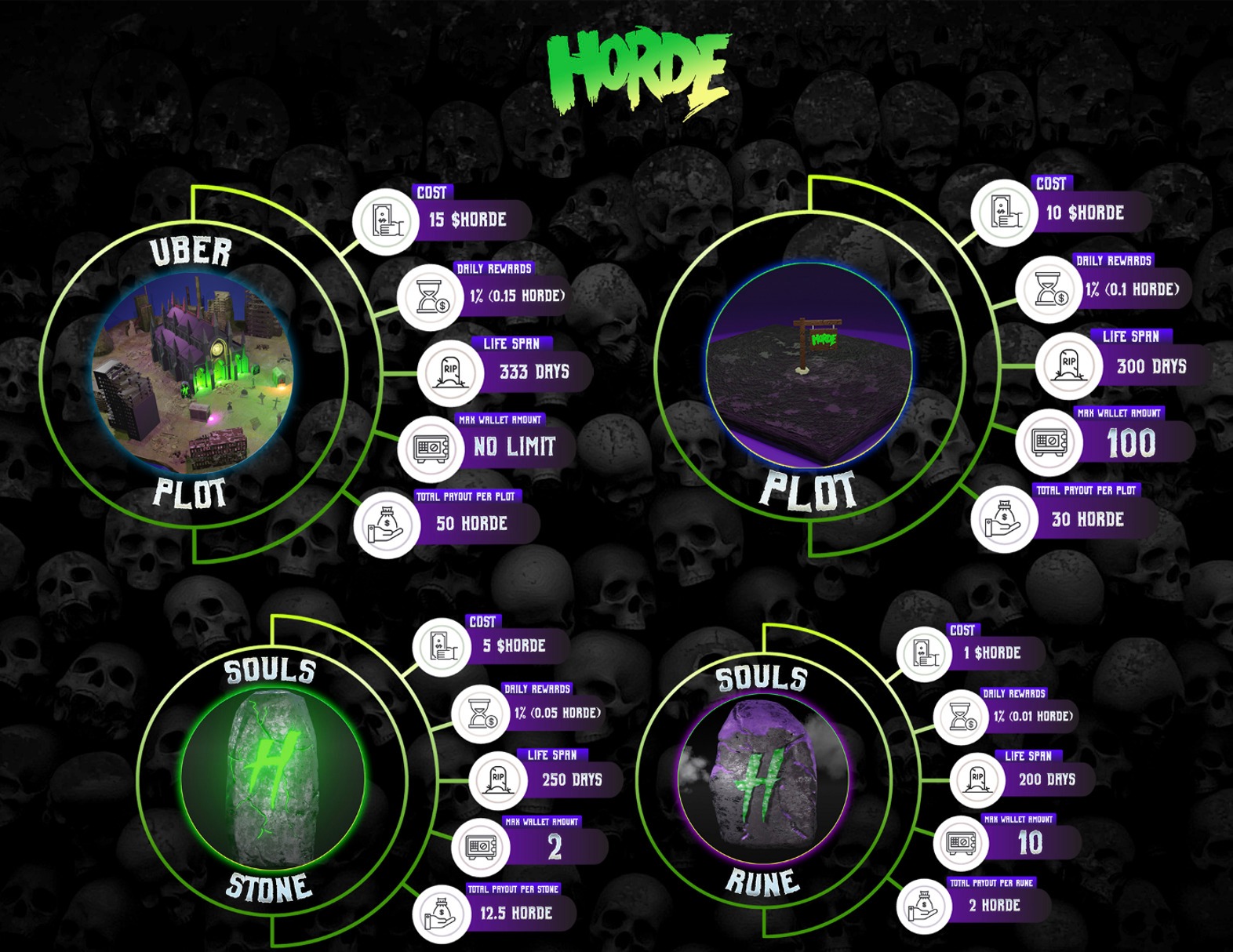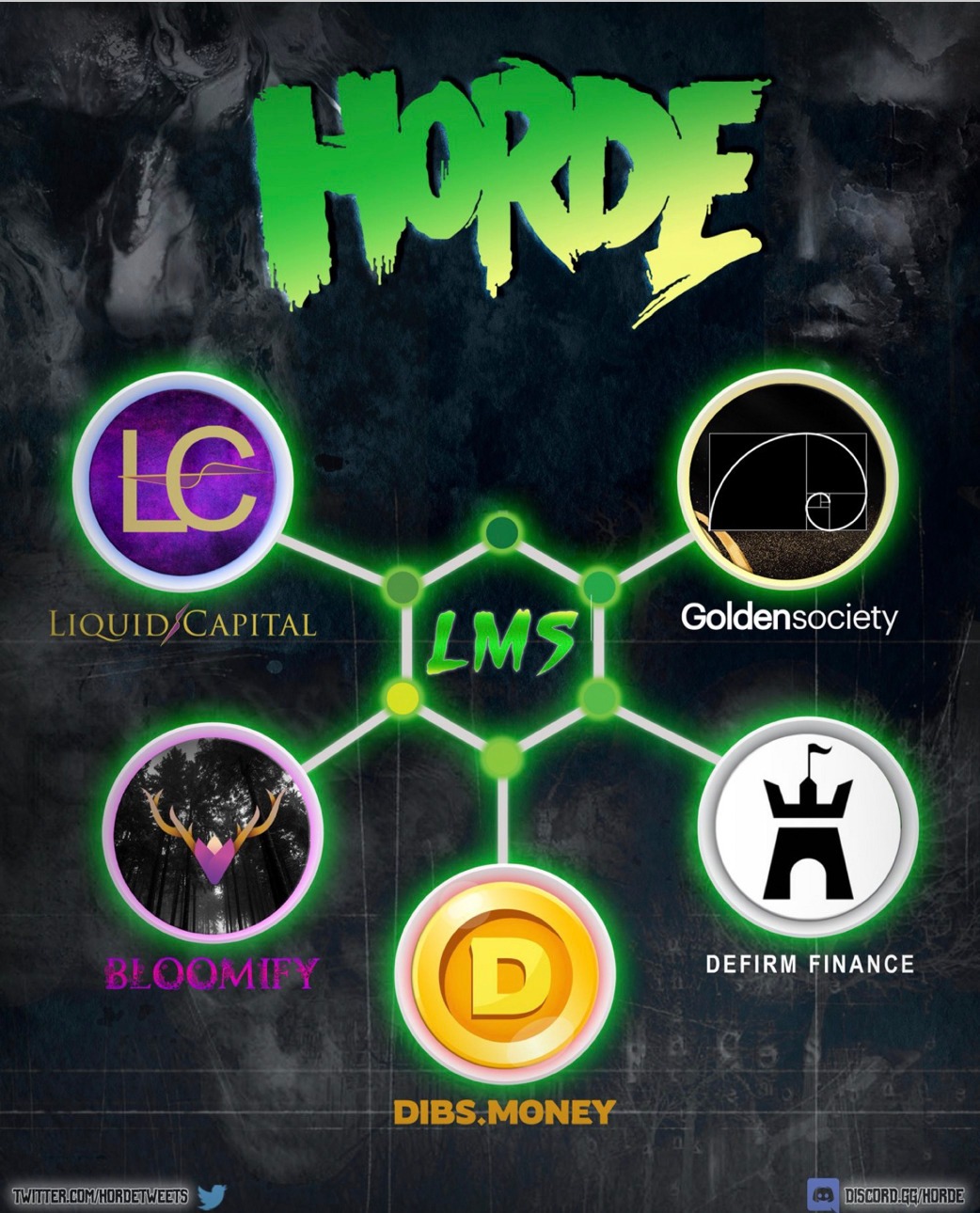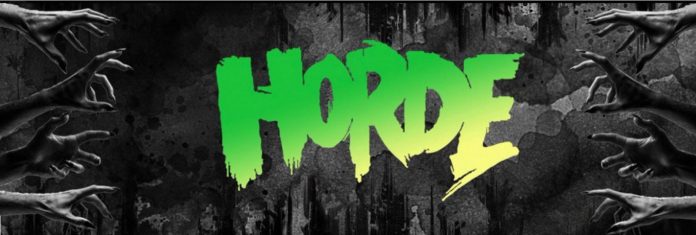Over the last few months, the crypto market has taken its share of hits. Just in the last few months the overall crypto market shrunk from over 2 trillion in April 2022 to under 1 trillion by mid-July, UST and Terra crashed and failed to recover, and a crypto winter had begun with prices going lower and lower. But, with necessity being the mother of all inventions, the last few months have not been without their bright spots. Just like the great depression in the 1930s brought us things we love and use still today like sliced bread, the car radio, and chocolate chip cookies, this crypto winter a revolutionary project was launched that has the potential to change the future of DeFi. Days into the downturn on April 22nd, 2022, HORDE was launched. Horde launched with a simple premise: 300% ROI, 300 days of rewards, and a P2E game in the future. These 3 things still hold true, but the project has grown in scope and in unexpected ways. It has been nearly 150 days since launch and the project is going strong, gaining traction, and evolving all along the way innovating and delivering results.

What is HORDE and what makes it different from other DeFi projects?
HORDE is a project that is at the same time simple, sophisticated, and adaptable. The team at HORDE looked to make a new protocol from scratch that avoided the most common missteps of other projects that existed in the DeFi space. The project was designed to be both sustainable and equitable and key features were integrated to help achieve these goals. Although these features were ridiculed when the project launched, dozens of projects have since attempted to imitate them.
HORDE’s standout features are its price-bound range, where the token price stays between a set price using HORDE’s proprietary Liquidity manager and the fact that rewards are capped. These two features work in tandem and make HORDE one of a kind. These features are foundational to the protocol and ensure that it is both sustainable and equitable. The stabilization of the token price helps keep rewards consistent which has a dual purpose. It helps keep people who entered into the project early from getting 100x on their investment only to drain the project of liquidity and push the price of the underlying tokens to $0.00. A stable price also gives everyone the same entry point and the value of the rewards are the same over time. The second feature, the fact that rewards are finite, keeps the protocol sustainable by not offering lifetime rewards off a single investment.

HORDE investors purchase “Plots” with HORDE tokens and receive 1% rewards per day on the amount invested. The token price is stabilized at $99-$112 thanks to HORDE’s aforementioned proprietary Liquidity Manager, but more on that later. There are 4 different plots to choose from ranging in price from 1 to 15 tokens. All plots produce the same 1% rewards daily and have limited rewards cycles between 200 and 333 days.
REAL. WORLD. UTILITY
Where HORDE stands head and shoulders above its peers is the fact that the project has created real-world utility with its Liquidity Manager. Once people saw how well the Liquidity Manager worked especially in a downward market it became apparent that other projects needed and wanted a Liquidity Manager of their own to maintain the price of their underlying tokens. So HORDE LMS was born.
What the team at HORDE offers with LMS is so much more than a bolt-on accessory that other projects can utilize. Implementing LMS (Liquidity Manager Service) on any protocol will help with the price stability of the underlying token, but it will also create the opportunity for a partnership between HORDE and the other protocols. The extent of this partnership is flexible and can be tailored to the needs and wants of the other projects. This partnership could look like advisement from the HORDE founders on any range of subjects, meetings to discuss ideas or innovations, and access to the HORDE community of investors .


